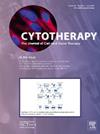Stem Cell Therapy as a Potentially Effective Treatment for End-Stage Kidney Failure in Cats
IF 3.2
3区 医学
Q2 BIOTECHNOLOGY & APPLIED MICROBIOLOGY
引用次数: 0
Abstract
Background & Aim
Stem cell transplantation is an emerging therapy for feline chronic kidney disease (CKD), showing promising results in many cases. It has been associated with significant improvements in clinical signs and blood test results. Recently, intravenous stem cell injection has been explored as a potential treatment option for managing feline CKD. This therapy has shown benefits in improving appetite, mobility, renal function, and coat condition, as well as slowing the progression of CKD.
Blood test data from this study demonstrated the effectiveness of stem cell injections across various stages of CKD, classified using the 2023 modified International Renal Interest Society (IRIS) CKD staging guidelines. These stages range from Stage 1 (early) to Stage 4 (end-stage disease).
Methodology
This study aimed to evaluate the outcomes of three series of stem cell injections by analyzing key renal indicators—Blood Urea Nitrogen (BUN), Creatinine, Phosphorus, and Symmetric Dimethylarginine (SDMA)—from blood samples, based on the 2023 modified IRIS CKD staging guidelines. The felines were categorized into four groups according to their CKD stages: Group 1: Felines at CKD Stage 1, Group 2: Felines at CKD Stage 2, Group 3: Felines at CKD Stage 3, Group 4: Felines at CKD Stage 4
Results
A total of 29 felines, all showing elevated concentrations of BUN, Creatinine, Phosphorus, and SDMA prior to treatment, were included in the study. Each feline received three series of intravenous stem cell injections, with intervals of 1 to 3 weeks between injections.
The results demonstrated a significant reduction in key renal biomarkers (BUN, Creatinine, Phosphorus, and SDMA) following stem cell treatment, with the most pronounced improvements observed in felines at Stage 4 of CKD.
Conclusion
This suggests that stem cell injections offer a stable and effective approach for managing CKD, leading to marked clinical improvements and enhanced quality of life. These findings support the potential of stem cell therapy as a complementary treatment to traditional therapies for feline CKD.
干细胞治疗是猫终末期肾衰竭的潜在有效治疗方法
背景,干细胞移植是一种新兴的治疗猫慢性肾脏疾病(CKD)的方法,在许多情况下显示出良好的效果。它与临床症状和血液检查结果的显著改善有关。最近,静脉注射干细胞已被探索作为治疗猫慢性肾病的潜在治疗选择。这种疗法在改善食欲、活动能力、肾功能和皮肤状况以及减缓CKD的进展方面显示出益处。根据2023年修订的国际肾脏利益协会(IRIS) CKD分期指南,本研究的血液检测数据证明了干细胞注射在不同阶段CKD中的有效性。这些阶段从1期(早期)到4期(终末期)不等。本研究旨在根据2023年修订的IRIS CKD分期指南,通过分析血液样本中的关键肾脏指标——血尿素氮(BUN)、肌酐、磷和对称二甲基精氨酸(SDMA),评估三个系列干细胞注射的结果。根据猫的CKD分期将其分为四组:1组:CKD 1期猫,2组:CKD 2期猫,3组:CKD 3期猫,4组:CKD 4期猫。结果共纳入29只猫,治疗前均出现BUN、肌酐、磷和SDMA浓度升高。每只猫接受三组静脉注射干细胞,注射间隔1至3周。结果显示,干细胞治疗后,关键肾脏生物标志物(BUN、肌酐、磷和SDMA)显著降低,其中在CKD 4期的猫科动物中观察到的改善最为显著。结论干细胞注射治疗慢性肾病是一种稳定有效的治疗方法,可显著改善患者的临床状况,提高患者的生活质量。这些发现支持了干细胞疗法作为猫慢性肾病传统疗法的补充疗法的潜力。
本文章由计算机程序翻译,如有差异,请以英文原文为准。
求助全文
约1分钟内获得全文
求助全文
来源期刊

Cytotherapy
医学-生物工程与应用微生物
CiteScore
6.30
自引率
4.40%
发文量
683
审稿时长
49 days
期刊介绍:
The journal brings readers the latest developments in the fast moving field of cellular therapy in man. This includes cell therapy for cancer, immune disorders, inherited diseases, tissue repair and regenerative medicine. The journal covers the science, translational development and treatment with variety of cell types including hematopoietic stem cells, immune cells (dendritic cells, NK, cells, T cells, antigen presenting cells) mesenchymal stromal cells, adipose cells, nerve, muscle, vascular and endothelial cells, and induced pluripotential stem cells. We also welcome manuscripts on subcellular derivatives such as exosomes. A specific focus is on translational research that brings cell therapy to the clinic. Cytotherapy publishes original papers, reviews, position papers editorials, commentaries and letters to the editor. We welcome "Protocols in Cytotherapy" bringing standard operating procedure for production specific cell types for clinical use within the reach of the readership.
 求助内容:
求助内容: 应助结果提醒方式:
应助结果提醒方式:


